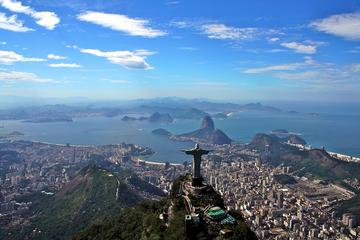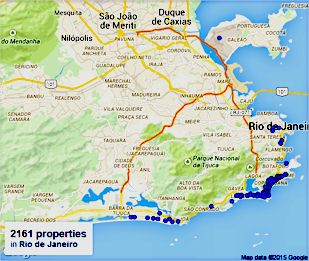» BRAZIL • Discover Brazil • Southeast Brazil • Rio de Janeiro
Discover Magical Rio de Janeiro
Rio de Janeiro is famous for its natural settings, its Carnival celebrations, samba and other music, and hotel-lined tourist beaches, such as Copacabana and Ipanema, paved with decorated black and cream swirl pattern mosaics known locally as 'pedra portuguesa'.
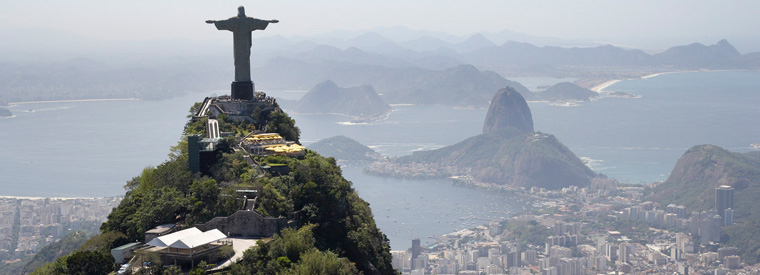
A | B | C | D | E | F | G | H | I | J | K | L | M | N | O | P | Q | R | S | T | U | V | W | X | Y | Z
» Angra Dos Reis
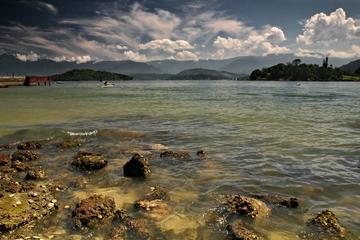
With miles of white sand beaches, aquamarine waters and a backdrop of forested mountains, Angra dos Reis, or the Bay of Kings, is as impressive as its name suggests and known as one of the top attractions of Brazil's famous Costa Verde (Green Coast). The main draw of Angra dos Reis is its serene coastline, and with 365 islands dotting the bay, there are many beaches to explore. Cruising around the islands is a popular pastime for visitors, and the warm, clear waters offer ample opportunities for swimming …
» Bairro Cosme Velho
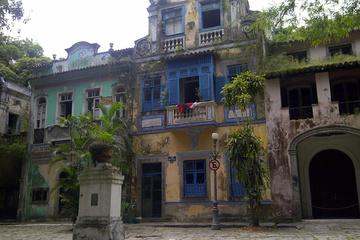
The Cosme Velho neighborhood is best known as the jumping-off point to ascend Corcovado Mountain to Christ the Redeemer. Most visitors to Rio will set foot in this small, historic area on their way to the city's most iconic attraction, but it's worth it to explore beyond that. From shady plazas overgrown with jungle to colonial architecture, Cosme Velho offers a taste of Rio's old-time charm. The neighborhood's principal street, Rua Cosme Velho, snakes up into the hilly area and to 'Estação de Ferro do Corcovado,' where visitors catch the funicular to the Christ Statue …
» Bank of Brasil Cultural Center (Centro Cultural Banco do Brasil)
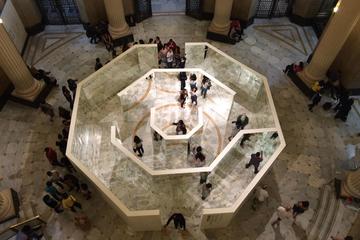
Since 1986 Bank of Brasil Cultural Center has been showcasing an impressive collection of artwork that's made it one of the top 100 most-visited art museums in the world. With more than two million visitors annually, the Rio de Janeiro branch of this national treasure is without a doubt the most popular. Its art deco building, which was designed by Francisco Joaquim Bethencourt da Silva, includes a theater and cinema in addition to multiple art galleries. In addition to a stunning permanent collection that includes cultural and historical exhibitions …
» Barra da Tijuca
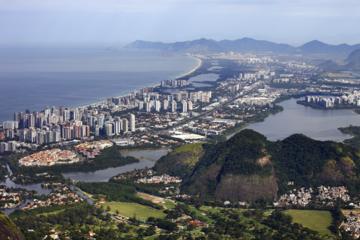
Barra da Tijuca, often referred to simply as Barra, is one of Rio's newest neighborhoods - evident by its mega malls and glass-towered condominiums. As one of the city's more affluent neighborhoods, it's also among the safest. Brazilians often refer to the neighborhood as the Brazilian Miami for its wide, palm-lined roads and upscale shopping. What brings visitors to Barra is the 10-mile (17-kilometer) long stretch of beach fronting the neighborhood. It's the largest stretch of beach in a city famous for them and a popular place for surfing …
» Botafogo Bay
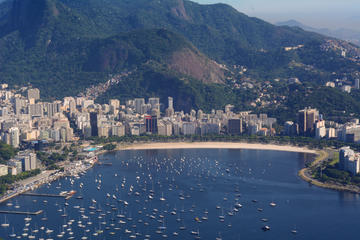
There was once a time when Botafogo Bay was the fortuitously placed conduit between downtown Rio and the glamorous southern beaches. Put another way, if travelers came to Botafogo it was solely as a break while traveling between two of Rio's most popular zones. Today, however, with a recent infusion of shops, restaurants, infrastructure, and cafés, Botafogo has become a neighborhood that's a Rio site in itself. By day, visit the colonial mansions where Portuguese royalty ruled from afar, and stroll the shores …
» Botanical Garden (Jardim Botanico)
Idyllic and serene among the bustle of Rio the Botanic Gardens - or Jardim Botanico - are a delightful place to soak up the beauty of both Amazonian and imported plants. There are over 5,500 species of plant and this is where you will find the first tea, cloves and cinnamon that were brought to Brazil to acclimatize. Highlights include the lake containing massive water lilies, the orchids and the Japanese Garden. The gardens were founded in 1808 by the Prince Regent Dom João …
» Casa Franca Brasil
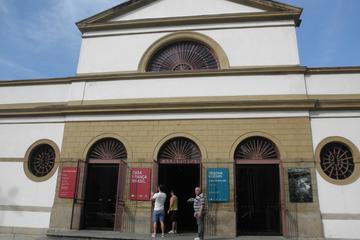
This architectural highlight was built in 1820 and once served as a customs house for the region. Today, Casa Franca Brasil is home to rotating exhibitions that showcase the nation's political and cultural history. Travelers say the building is worth a visit because it's an impressive example of neo-colonial architecture that's anything but typical of Rio de Janeiro. And while the on-site restaurant offers some pretty delicious local eats, the gallery shows can be hit or miss …
» Cervejaria Bohemia
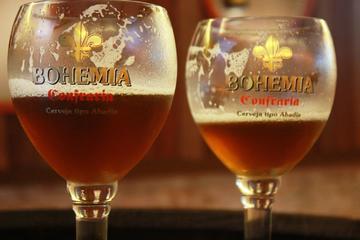
There's a lot more to Cervejaria Bohemia than simply 'the best beer in Brazil.' Sure, the beer that's made at this Petrópolis brewery is a local Brazilian favorite, but even visitors who aren't beer aficionados can enjoy this informative experience. Unlike any other brewery in Latin America-or for that matter, most of the world-this tech-enabled, self-guided tour takes visitors down a 'walkway of beer' as they learn the history of not only Bohemia, but beer making across the globe …
» Chacara do Ceu Museum
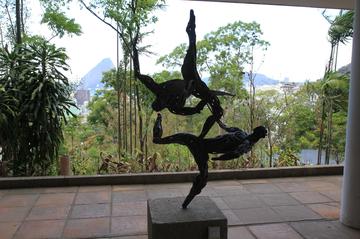
Situated in a sleek, chic modernist house in Santa Teresa, Rio's bohemian quarter, the Chacara do Ceu Museum houses part of the vast art collection of the late Brazilian industrialist and aesthete, Raymundo Ottoni de Castro Maya. Over the course of his 74-year lifespan, Castro Maya amassed over 22,000 works of art, a large portion of which is displayed at the museum (the others are showcased at the affiliated Museu do Açude, Castro Maya's other house). The Chacara do Ceu itself is a work of art, built amidst lush gardens in 1954 …
» Church of Our Lady of Candelaria
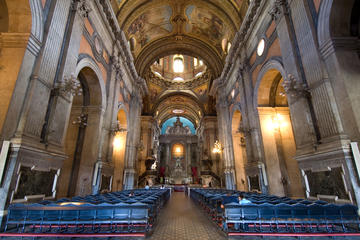
Once the tallest structure in all of Rio de Janeiro, the Church of Our Lady of Candelaria, with its striking combination of Baroque, Neoclassical, and Neo-Renaissance design styles, has a marred history. In modern times, the cathedral is best known for the cold-blooded shootings by the police of a group of homeless children sleeping just outside the doors of the church in 1993. A decade earlier, the church played host to the funeral mass of teenager Edson Luis de Lima Souto, killed by police action …
» Cidade do Samba (Samba City)
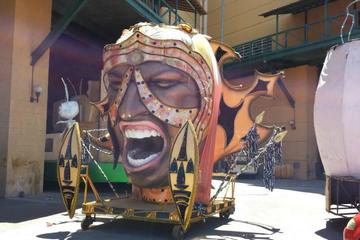
Every February and early March, the world's largest party takes place on the streets of Rio de Janeiro, Brazil. Sure-Carnaval is celebrated in ports and cities all around the globe, but none have the flare, color, or passion of the massive festival in Rio. At the Cidade do Samba in the city's port district, visitors will find that the Carnaval sprit isn't just for a week-but actually lasts the entire year inside enormous, float-filled warehouses. Sometimes known as 'Samba City,' this colorful complex is where 14 of the city's top samba schools …
» Cinelandia
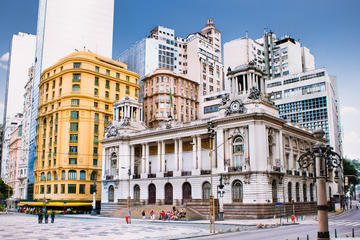
Located in Rio's central financial district, Cinelandia is the common name for an attractive Parisian-style square officially named Praça Floriano Peixoto. During the early years of the twentieth century, Rio's city center was remodeled to make the city more trendy and livable. An eighteenth century convent was torn down to make way for the public plaza, and by the mid twentieth century, Cinelandia was home to a municipal theater, national library and school of fine arts. In the location of the former conven …
» Copacabana Beach
Copocabana Beach, or Praia de Copacabana, is the Rio de Janeiro of the tourist brochures and deservedly so. It's a breath-taking 2.5mi (4.5 km) stretch of bright sand that's filled with people luxuriating in the sun and soaking up the atmosphere. As night descends the lights go on and football is played until the wee hours. Other groups start singing and dancing and still others are just there to check each other out. The busy sidewalks can get seedy at night so take care …
» Copacabana Fort
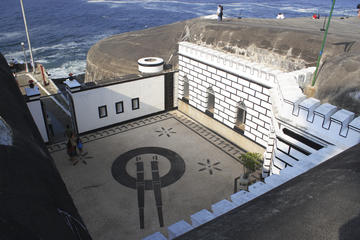
Situated on the south end of Copacabana Beach lies a piece of Brazilian military history, the Copacabana Fort. Built just before the First World War, the fort is strategically located on a thin strip of rock that juts into the ocean and was designed to protect Rio de Janeiro from attack. On the headland, there are two turrets that each hold two massive Krupp cannons, the largest being 305 mm, capable of firing a 980-pound (445-kg) shell up to over 14 miles (23 km) into the ocean. The area houses the Museum of the History of the Military …
» Corcovado
Spectacular in every direction the northern views offer the Maracana, the large soccer stadium built to host the 1950 World Cup, to the south you will see the Jardim Botanico and Ipanema, east is Sugarloaf and the beaches to its north. At the top of Corcovado is the statue of Christ the Redeemer who watches over Rio, his left arm points north. Make sure the weather is good, clouds can ruin the excursion …
» Crystal Palace
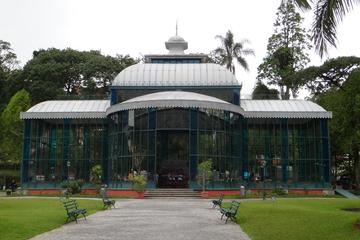
Petrópolis is as town that was originally founded upon royal opulence and wealth, and nothing says lavish, regal design than a building constructed of crystal. Today, the Crystal Palace is a large greenhouse that's comprised mostly of glass, although the sparkly chandelier inside the building still has the crystal touch. Built in France and transported here to the hills outside of Rio, the palace was initially offered as a gift from Count D'Eu to Princess Izabel. For years this venue was used to host the royalty's extravagant balls …
» BRAZIL • Discover Brazil • Southeast Brazil • Rio de Janeiro



